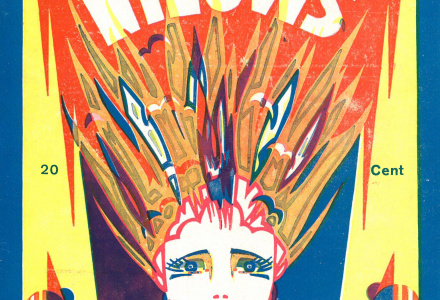Brochures and Programmes
In addition to many posters and photographs, EYE also has many brochures and programmes that were put out by distributors and cinema companies in the 1930s. These were to promote film and cinema companies and the stars who acted in their films.
Cinema companies such as Capitol and City published their programmes ‘Capitol Nieuws’ and ‘City’s Magazine’. These publications included not only information about the films they were screening, but also handled subjects such as ‘how an actress becomes famous’ or whether ‘the woman who smokes’ was modern, and ‘where the stars spend their holidays’. This was mainly about Hollywood stars such as Greta Garbo, Myrna Loy, Jean Harlow and Joan Crawford.
Focus on Hollywood
Their special focus on Hollywood stars wasn’t only because their films played in these cinemas or that they enjoyed a certain degree of popularity. It was also due to the extensive publicity campaigns that their producers set into motion worldwide.
At that time, the major American producers such as MGM, Paramount and RKO regularly distributed news and gossip about their stars, and not only via programmes but also through (film) magazines that received this sort of information, including photographs, for free.
Advertising advice
At that time, Dutch cinema owners were also sent special folders explaining how they should advertise certain films they were planning to show. For example, the distributor of the film Suikerfreule, Tobis Filmdistributie, explained in specially made folder how the film should be ‘conveyed’ and which key sentences should be used for pre-promotion. The cinema owners were also requested to send the two articles included in the folder to the press prior to the premiere.
Brochures from films at that time such as De Jantjes and Bleeke Bet included not only visual and textual information about the content, cast and crew, but also lines and songs from these films.
Some of these brochures were printed in not Dutch as well as other languages to make them usable for foreign markets. For example, the texts in a handsomely designed brochure for the film Terra Nova are written in Dutch, German and English. For the film Dood water, which was awarded a prize in Venice, there are brochures in Dutch, Italian and Danish.
more information
If you are looking for more material from our collection, please contact Film Sales:
sales@eyefilm.nl
phone +31 (0)20 5891 426
